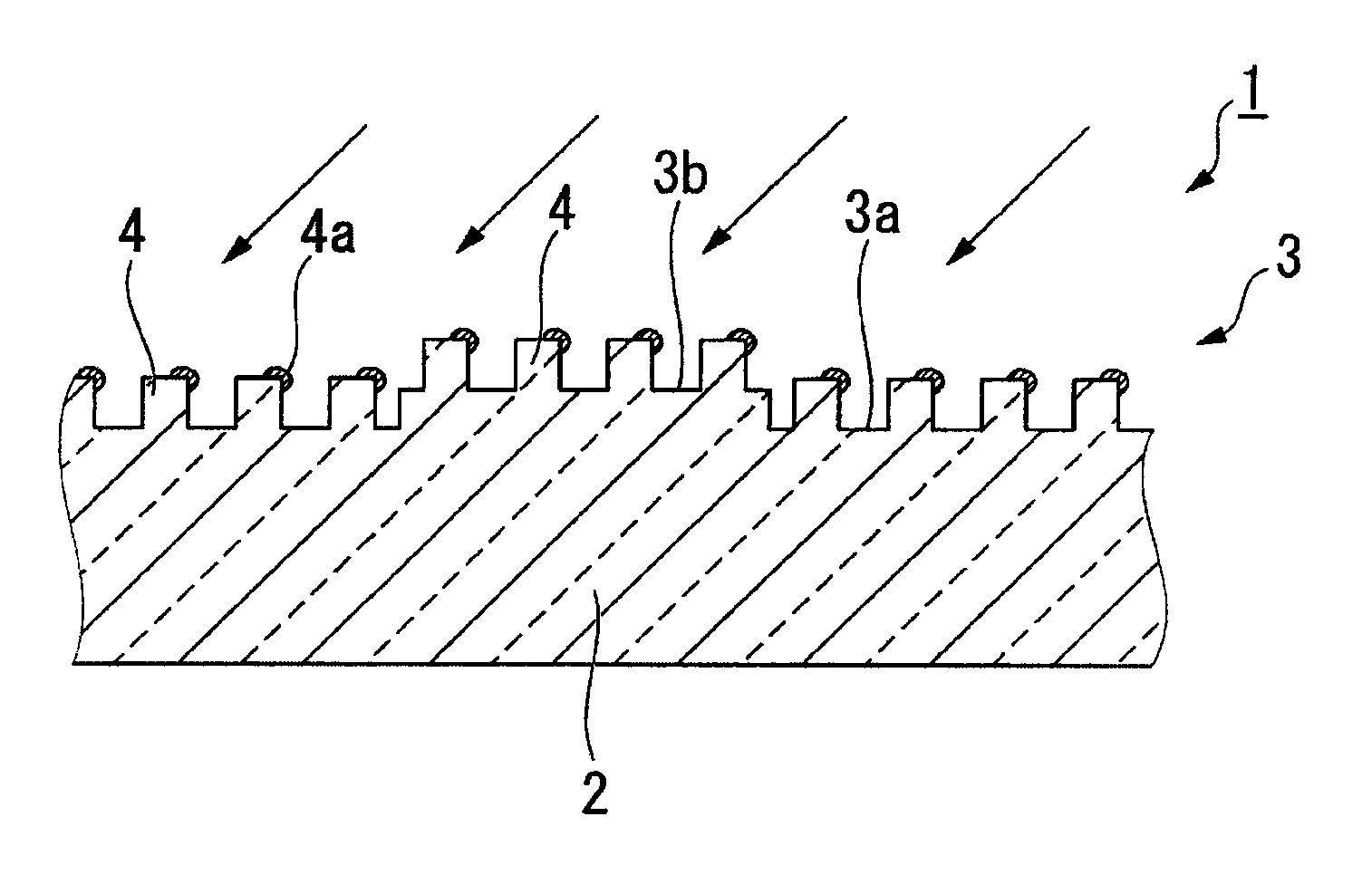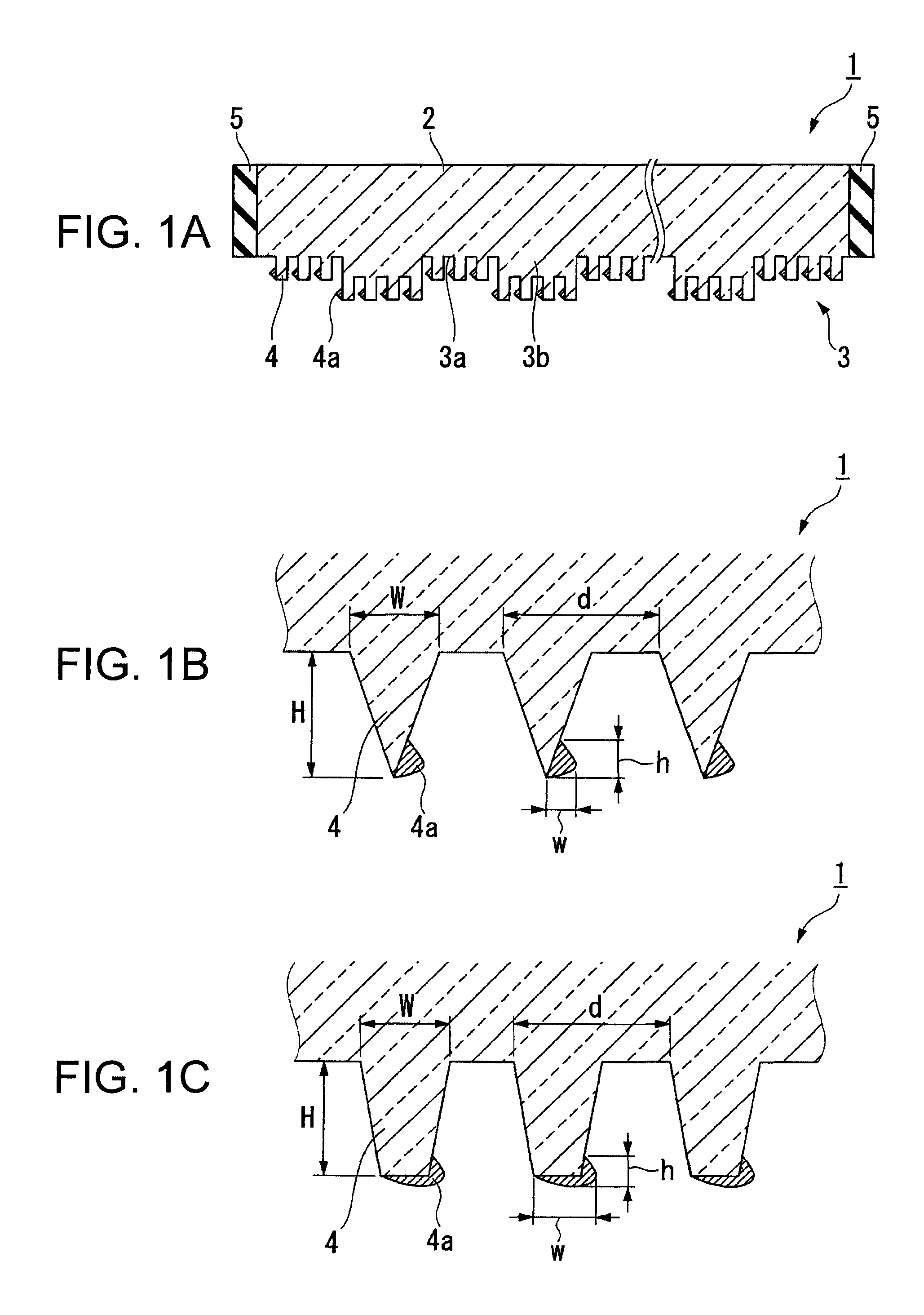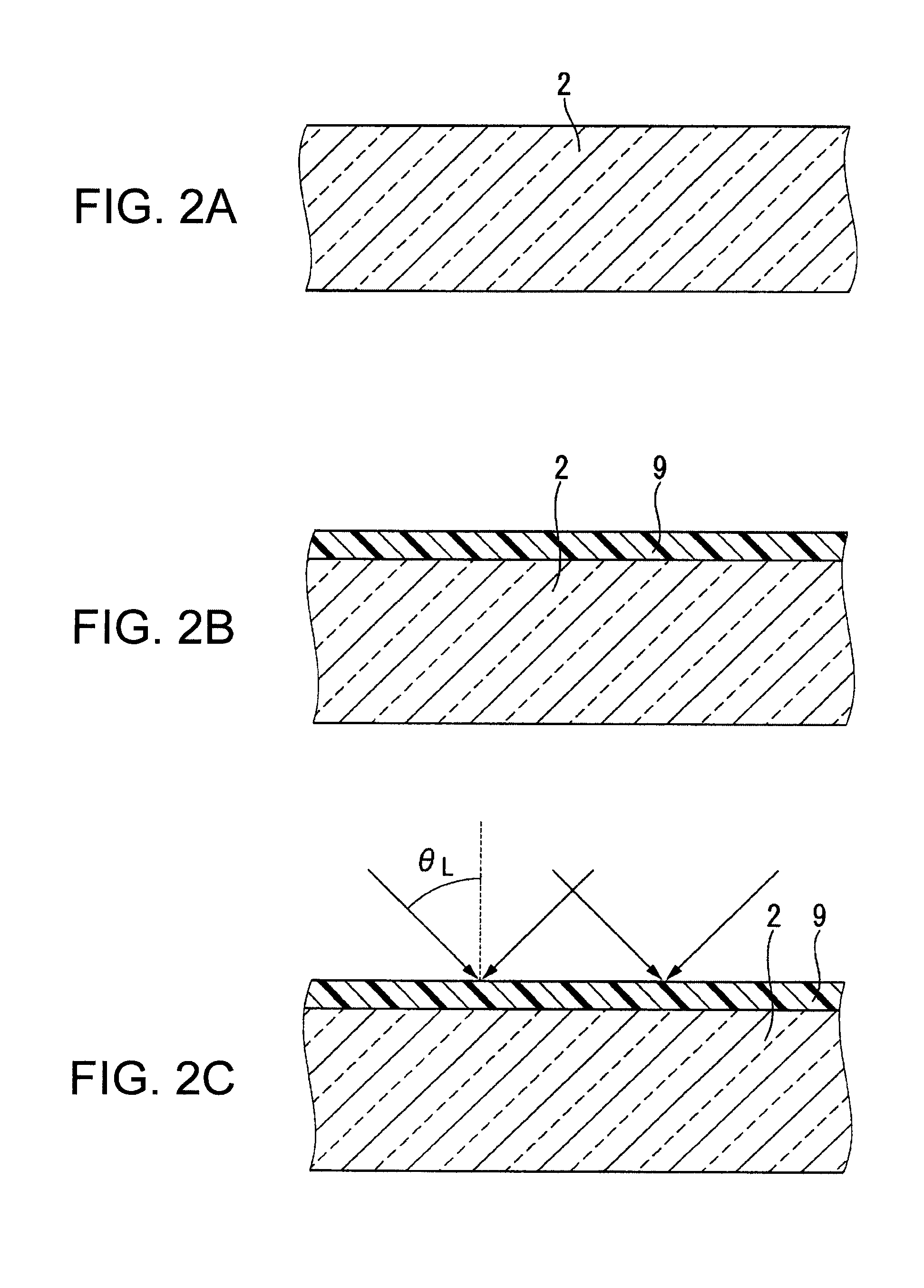Method for manufacturing an optical element to polarize and split incident light
a manufacturing method and optical element technology, applied in the direction of polarizing elements, instruments, photomechanical devices, etc., can solve the problems of inability to improve the transmission rate or contrast (extinction ratio) of the polarizing element in full measure, and the inability to apply a low viscosity resist made for nano-fabrication in a thin and uniform layer onto such concave-convex face. achieve the effect of improving the optical performance and improving the optical performance of the optical elemen
- Summary
- Abstract
- Description
- Claims
- Application Information
AI Technical Summary
Benefits of technology
Problems solved by technology
Method used
Image
Examples
Embodiment Construction
[0031]Embodiments of the invention will be described. In the drawings which will be referred in the following description, a scale size may be different in each member or layer in order to make each member or layer recognizable.
[0032]FIG. 1A schematically illustrates a sectional structure of an optical element according to an embodiment of the invention. FIGS. 1B and 1C are enlarged views of FIG. 1A.
[0033]Referring to FIG. 1A, an optical element 1 according to the embodiment includes a substrate 2, a diffractive structure 3, a grid portion 4 and a light absorber 5. The optical element 1 has a function to polarize and separate incident light with the grid portion 4.
[0034]The substrate 2 is transparent to wavelength of the incident light. For the substrate 2, a substrate made of an inorganic material such as a glass (quartz) substrate can be adopted. A thickness of the substrate 2 is for example about 0.7 mm. On one side of the substrate 2, the diffractive structure 3 is provided. The...
PUM
 Login to View More
Login to View More Abstract
Description
Claims
Application Information
 Login to View More
Login to View More - R&D
- Intellectual Property
- Life Sciences
- Materials
- Tech Scout
- Unparalleled Data Quality
- Higher Quality Content
- 60% Fewer Hallucinations
Browse by: Latest US Patents, China's latest patents, Technical Efficacy Thesaurus, Application Domain, Technology Topic, Popular Technical Reports.
© 2025 PatSnap. All rights reserved.Legal|Privacy policy|Modern Slavery Act Transparency Statement|Sitemap|About US| Contact US: help@patsnap.com



